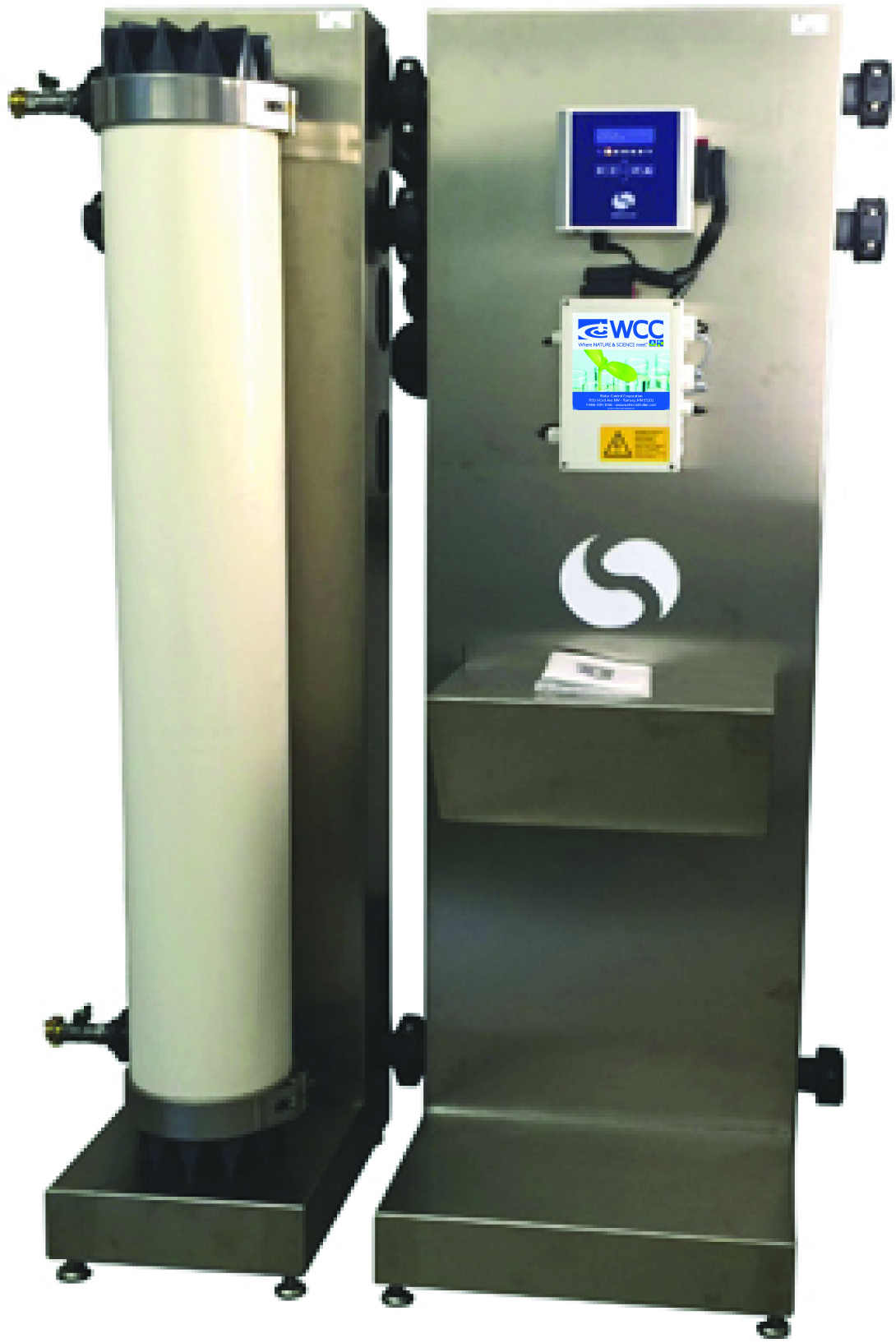

High-Capacity Ultrafiltration Point-of-Entry (Whole Building)
 WCC (Water Control Corporation) offers HUF® / High-Capacity Ultrafiltration Point-of-Entry (Whole Building) systems capable of filtering 700GPM+, with very little pressure loss. These systems feature membrane integrity monitoring, BAS connectablity, variable speed chemical injector control capability, and more.
WCC (Water Control Corporation) offers HUF® / High-Capacity Ultrafiltration Point-of-Entry (Whole Building) systems capable of filtering 700GPM+, with very little pressure loss. These systems feature membrane integrity monitoring, BAS connectablity, variable speed chemical injector control capability, and more.Keep Legionella and Other Waterborne Pathogens Out of Your Building!
Legionella and a host of other pathogens like Pseudomonas and Mycobacterium can survive and thrive in a layer of biofilm in your facility’s piping system. Every year they cause countless infections of the lungs, skin, internal organs, and more. Legionnaire’s disease is of particular concern – especially in healthcare and hotel facilities. A recent memo from the Centers for Medicare and Medicaid Services now mandates infection control programs for health care facility water systems.
Most current control measures involve applying high water temperatures, heavy metals, or harsh/corrosive chemicals to building water systems, in order to bring bacterial levels down below “acceptable” levels. In some situations (particularly in existing facilities with ongoing bacterial problems), these control measures remain essential.
Point-of-Entry (Whole Building)
WCC is excited to bring a significant new tool to the table in the battle against waterborne pathogens: High-Capacity Ultrafiltration (HUF®) whole-building (point-of-entry). This system features high-flow, low pressure loss, self-cleaning, hollow fiber membranes by German innovators, Seccua GmbH. These filters screen out 99.999% of all bacteria and particulates (including 99.99% of viruses) before they can ever enter a facility; And they do so without removing essential disinfectants provided by the city.
The results are dramatic. In new facilities, virtually all microorganisms and nutrients are removed before they can gain a foothold in building plumbing systems. Existing chemical residuals from the city are normally more than adequate to keep any organisms (which enter via other means) under control. The self-cleaning membranes last 10 – 20 years before they need changing. Systems feature automatic membrane integrity monitoring to let operators know when maintenance is required.
In existing facilities, point-of-entry High-Capacity Ultrafiltration (HUF®) becomes an instant “firewall” to virtually any new microorganisms or nutrients entering the facility. The ultrafiltration disrupts the biological life cycle. Over a period of several months (typical), and often in conjunction with chemical disinfectant injection and system flushing, pathogen levels drop to undetectable levels. This occurs via a massive “die-off” within the system as microorganisms are starved for nutrients. Note that this process needs to be managed by a qualified infection control professional.
Resources
Want to get started right away? Fill out our High-Capacity Ultrafiltration System Design Questionnaire. Once submitted, our team will arrange everything.
High-Capacity Ultrafiltration – Legionella & Pathogen Control Brochure
High-Capacity Ultrafiltration Engineering Guide
ASHRAE – Guidance to Help Minimize the Risk of Legionellosis

